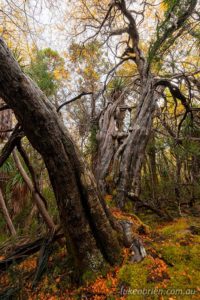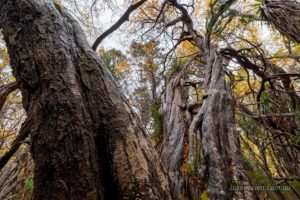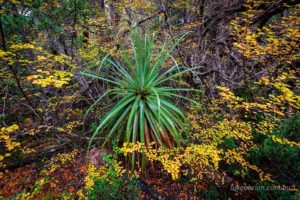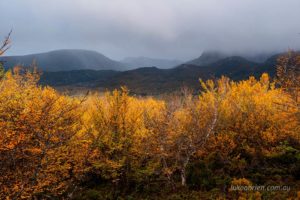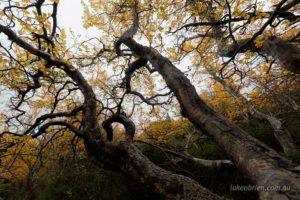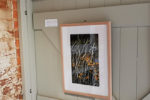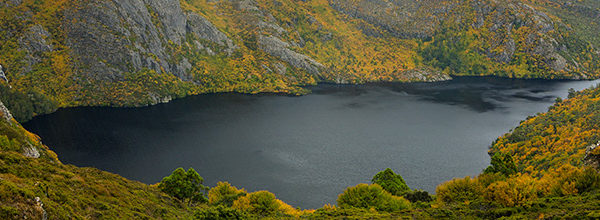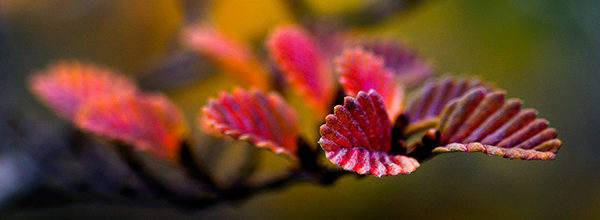Fagus at Hounslow Heath
This year prior to my “Festival of Fagus” workshop with the Cradle Mountain Hotel, I spent half a day amongst the fagus on Hounslow Heath. The highlight of the walk was this particularly large fagus tree – encountered very shortly after commenting that you don’t often see many big fagus trees!
The fagus is Australia’s only native deciduous tree. Each autumn its leaves turns a brilliant gold, allowing visitors to see some of Tasmania’s most well loved locations in a whole new light.
The Hounslow Heath track is probably one of the lesser visited tracks at Cradle Mountain and is not well maintained anymore. In fact the track up was more like a creek than a track on this visit and most of the climb involves navigating slippery tree roots and mud. Having said that, it is a great way to see the fagus and some nice long views to Cradle Mountain and Marions Lookout.
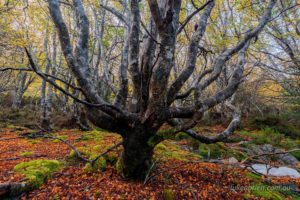
Autumn in a deciduous beech forest, the mossy forest floor is covered in fallen leaves, as a few yellow leaves remain clinging to the tree.
A trip to Tasmania’s mountains is a trip back in time to the ancient super-continent Gondwana. Most of the tree species here are endemic to Tasmania and only found in remote and exposed alpine areas, with closest relatives found in far away locations like South America. All of these species are highly susceptible to the warmer and drier climate we now find ourselves racing towards. I shot a lot of these images thinking that landscape photography is fast becoming a documentary type activity, recording treasures that may or may not survive a lot longer.

